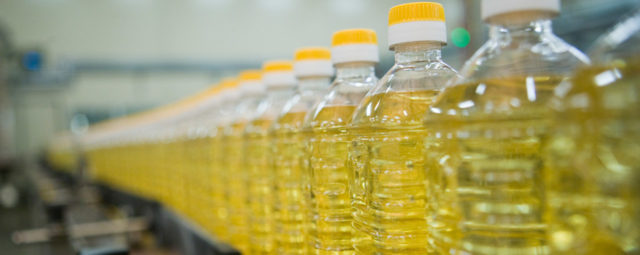
Cargill reduces plastic packaging by 2.5 million pounds
Food in Canada
Packaging Sustainability Cargill oils Packaing Plastic Waste
Cargill has reduced the amount of plastic it uses for its vegetable oil bottles and containers by more than 2.5 million pounds (nearly 1,200 metric tons) globally. These plastic reductions are removing nearly 2,900 metric tons of greenhouse gases (GHGs) per year from the atmosphere, which is equivalent to removing 616 cars from the road.
“Plastic packaging is a growing concern for many of our customers and consumers because of plastic waste pollution and the environmental impact of producing plastic,” said Tai Ullmann, global sustainability manager for Cargill’s edible oils business, in a press release. “Using less plastic in the packaging used for our vegetable oils helps customers who have set goals around plastic reduction or recyclability, as well as reducing GHGs.”
Examples of plastic reduction in packaging in each of the four geographies in which Cargill’s edible oils are manufactured.
North America
- Eliminated 930,000 pounds (421 metric tons) of plastic usage in packaging a year due to its investments in new bottling line technology; as well as retrofitting existing equipment and improving processes at its crush and refinery facilities. As a result, approximately 1,219 metric tons of GHGs per year has been reduced from the atmosphere.
- Using 100 per cent recycled polyethylene terephthalate (PET) plastic for packaging in its three new bottling lines.
- In addition, Cargill is now using smart technology to create bottles on-site from small, core plastic components, eliminating the need to transport standard-sized plastic bottles, thus cutting additional GHGs.
Europe
- Working with customers to reduce the amount of plastic in their one-litre bottles of vegetable oil. The changes are reducing plastic usage by 720,000 pounds (360 metric tons) a year. That removes 790 metric tons of GHGs per year from the atmosphere.
- Working with a German consumer goods customer to incorporate 30 per cent recycled PET in its one-litre bottles of vegetable oil. That will mean approximately 235,000 pounds of recycled PET will replace first-time-use plastic in the packaging. That project is in preparation for the European Union’s goal of plastic bottles having at least 25 per cent recycled content by 2025 and 30 percent by 2030.
Asia Pacific
- The edible oil brands in India, Gemini, Sweekar, and NatureFresh, cut approximately 25 per cent of the plastic used for select packages, eliminating 562,000 pounds (255 metric tons) of plastic usage in packaging in 2018. This resulted in removing 504 metric tons of GHGs per year from the atmosphere.
- Cutting down on the amount of raw plastic used across all platforms and products. For example, Cargill worked with Dow Chemical to reformulate its plastic material, making 90 per cent of its plastic packaging recyclable. It has a goal of using 100 per cent recyclable packaging for Gemini, Sweekar and NatureFresh brands by the end of 2020. To further raise awareness among consumers, the brands carry the slogan “recycle the present, save the future” on their packaging.
- Working working with the Indian Pollution Control Association (IPCA) to strengthen the collection and processing of used packages from consumers. IPCA has installed dry waste collection centers at important locations to segregate and compact plastic waste before distributing it to co-processing industries and plants. Cargill’s oils business has collected 25 per cent of used packages for recycling but expects those numbers to grow up substantially in 2020.
South America
- Cargill’s trusted soybean oil brand in Brazil, Liza, has reduced the amount of plastic in its 900 ml bottles of vegetable oil from 17.7 grams to 16.7 grams, which eliminates 355,000 pounds (161 metric tons) of plastic used in packaging in a year. This results in 390 metric tons of GHGs removed from the atmosphere each year.
Print this page